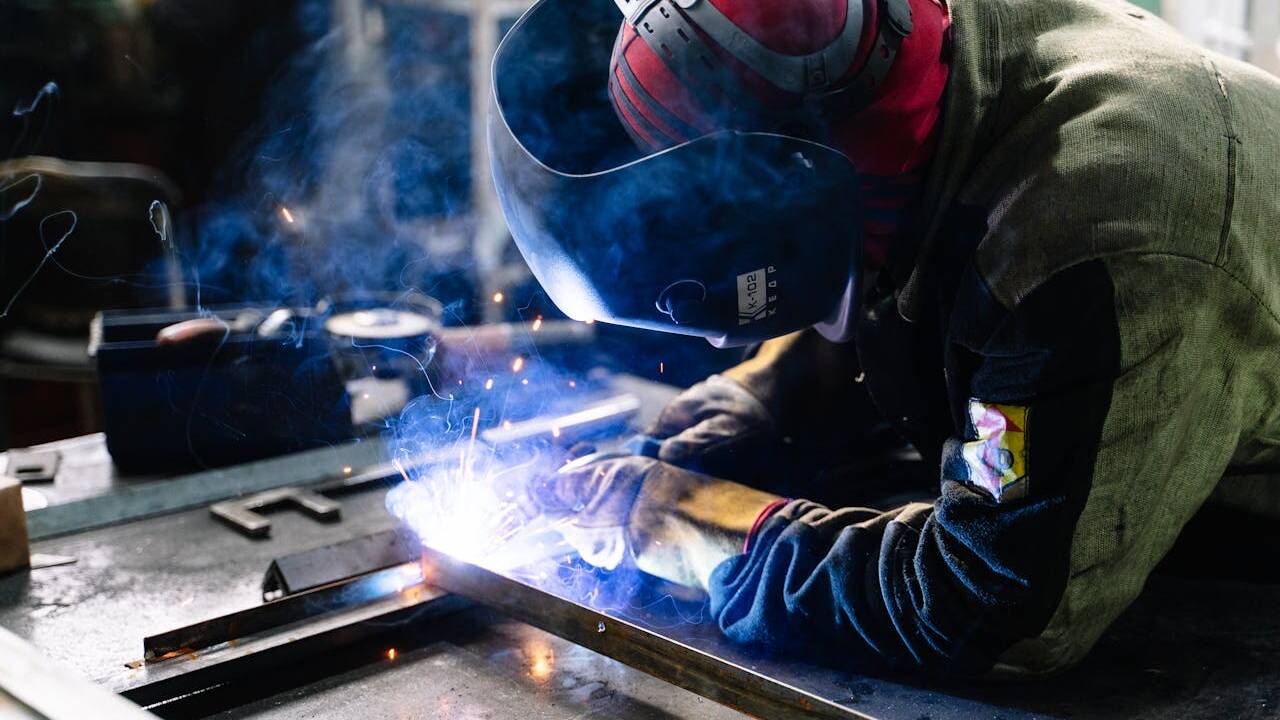Steel Welding vs Bolting: Which One’s Right for Your Build?

Every steel project reaches a point where you need to choose how everything comes together. Welding or bolting? It sounds simple but that one decision affects how your structure holds up, how fast you build, and how much you spend.
At Cedar Steel, we’ve worked with builders across Sydney and NSW who ask this exact question. Here’s how to break it down.
What is Steel Welding?
Steel welding joins metal pieces by melting and fusing them into one. It creates a continuous, permanent connection. No bolts. No gaps. Just solid steel, bonded together.
Welding is used across high-load areas where strength matters most. Think structural frames. Think welded beams and welded columns that carry real weight. You’ll often see structural steel welding in commercial buildings, warehouses, and tall towers. It works best where you want things fixed and secure forever.
What is Steel Bolting?
Now for the other option: bolting. It’s exactly what it sounds like using bolts to hold two steel pieces together. No melting. No welding gear. Just plates, holes, and fasteners.
Structural steel bolted connections are common in modular builds. They’re fast to install and easy to take apart. You’ll see them in prefabricated buildings, transportable sheds, or bridges that need adjustments later on. No heat, less mess, and more flexibility.
Want to adjust or remove a section years down the line? Bolting makes that possible.
Welding vs Bolting: Which is Stronger?
This one comes up a lot: Is welding stronger than bolting?
In short, yes. Welded steel creates a single, continuous joint. No moving parts. No weak points. When done right, it’s stronger than the base metal itself.
But that doesn’t mean bolting is weak. Far from it. Welding steel takes longer and can be overkill if your project doesn’t need that kind of muscle. Bolts, especially high-strength ones can hold just as much load in standard builds. It depends on the design, the forces at play, and how the connections are spaced.
So, stronger? Welding wins. But in real-world use? Both do the job if they’re done right.
Which One Costs More?
Welding can hit the budget harder. Why? It needs skilled workers, protective gear, and a longer setup. The inspection process takes time, too.
Bolting? It’s quicker. Easier to train for. And you won’t need heavy equipment or strict site conditions. Plus, bolt kits are cheaper than hiring a welder for a week.
Still, welding saves in other ways. No extra plates or fasteners. Less maintenance over time. So, if your build is long-term, the cost might balance out.
The bottom line is that bolting usually wins on upfront costs. But it depends on the project.

Which One is Faster?
If speed’s the goal, bolting is the quicker option. Once your parts are cut and drilled, you’re good to go. Fasteners go in, nuts tighten up, and it’s done.
Steel welding takes more time. You’ve got to prep surfaces, set up safety barriers, and wait for the welds to cool. If you’re working at height or in tight spaces, that adds even more time.
But in offsite construction, where components are welded steel beforehand and delivered ready to go, welding can actually save you time on the build site.
So it’s not always black and white.
What Lasts Longer?
Here’s where things get interesting. Welded joints hold up well over time. They resist moisture better too, especially when sealed and coated properly.
Bolted joints? They can loosen. Vibration, temperature changes, and time can all affect them. You’ll need to inspect and re-tighten now and then. Corrosion can sneak into bolt holes, too, if not protected.
Still, both can last decades if built right. Regular checks and proper coatings make a big difference.
Where Does Each Work Best?
Here’s a cheat sheet.
Use welding if:
- The joint needs to be permanent.
- You’re building a load-bearing structure.
- Appearance matters (welds are clean and seamless).
- It’s hard to get access later.
Use bolting if:
- You want the option to modify or disassemble later.
- Speed and ease of build are more important than appearance.
- You’re using prefabricated parts.
- Site access is limited, or conditions aren’t ideal for welding.
At Cedar Steel, we supply both. Our structural steel welding services support large commercial builds, while our prefabricated steel suits smaller or fast-moving jobs.
So, Which Should You Choose?
There’s no right answer. Some projects need welded connections. Others need bolts. Many use both.
Think about how long the structure will stand, how much stress it will take, and how fast it needs to go up. Then choose the method that fits.
Need advice? Get in touch with our team. We’ve helped projects across NSW weigh up welding vs bolting, and we’re happy to help you do the same.
Or, browse our full list of steel products and services to see what works best for your next build.

